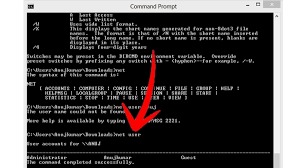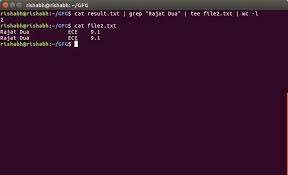How to retrieve the files of many users in Unraid server, such that, files do not belong to any share. This is pretty much the same for every user of Unraid, especially for rotating many files. Let’s get to the procedure of how to print a file list in unassigned folder.
Unassigned Folders – What are they?
Unassigned folders are simply storage spaces in your Unraid server that are not linked to any specific shared folder. This may be due to manual creation, not all required parts for the share have been implemented or due to failed file transfers.
How to List Files of Unassigned Folders
Using Unraid WebGUI:
Go to the “Shares” tab.
Select “unassigned” in the list.
Select the unassigned folder, and click the right mouse button near the selection of Properties option.
Discover the unassigned folder & select ‘Contents’ there will be an option under ‘General’
This list can be used as a reference and simply retype the list into a word file or spread sheet and print.
Using the Command Line:

Login to your unmapped storage server on SSH.
Type cd unassigned to go to the unassigned folder
Type ls to see the contents of the unassigned folder.
You can load the results of the ls command and use it later by ordering a format of the data in a text file.
Using the Unraid WebGUI
Go to the shares tab or the shares sections of the GUI.
Go to the column where there has been no assignment and click it.
In the properties of the unassigned folder, click on properties at the bottom right of the screen.
After that, on the General section, you will find a number of files and folders that are stored inside the unassigned folder.
This list can also be copied and pasted into a word-processing application or a spreadsheet for printing purposes.
Or, you can employ the inbuilt enjoyment feature and save the list in toss format.
Using the Command Line
Access your Unraid server through SSH.
In the command prompt, switch to the “unassigned” folder by using the command cd.
In this command, the contents of the unassigned folder will be displayed.
A long format of a directory output has to be requested, making use of the -l command when using the ls command.
To have the list printed on the screen itself, there will be no need to pipe the command to a file.
If you want to put the list in a text file, use the sign or, in this case, the greater than sign. Type the command like this one: ls –l a_list_of_file_names.
Basic Commands
ls: Displays files and folders stored in the present working directory.
ls -l: Displays files stored in a directory with information on size, permission, and time of modification, amongst others.
ls –a: Lists even those that have been hidden. Lists all the contents in a directory.
ls -h: The size of files can be presented in a readable manner.
cd: Used to change the location to a different folder.
cd unassigned: Moves to the ‘unassigned’ directory.
cat: Is used to read files.
cat file_list.txt: This one fetches the content of the file_list.txt.
Redirecting Output
: For File Customization. This will overwrite whatever content is already inside the target file.
ls -l file_list.txt: A similar operation that directs the detailed file list and chart to a text file – file_list.txt
: For Append Operation.
ls -l file_list.txt: This will add the details of the files to the file_list.txt which is already in creation.
Filtering and Sorting
grep: Retrieves specific data from the output.
ls – l | grep .txt: Will list files with extension only.
sort: Arrangements of Output
ls -l | sort -t ‘ ‘ -k 5: it rearranges the file in the order of the last modified date field five.
Piping Commands

Used for combining two or more pipelines by making the output of one the input to the next pipeline.
ls -l | grep ‘.txt’ | wc – l: This command gives the total count of the documents with a .txt extension in the current directory.
Customizing the Output
-h: The size of the files displayed is in human standards.
-t: This option orders files by the date they were last changed.
-r: It eliminates the order in which data is arranged.
-R: Saves and displays lists of files and subdirectories in the current working directory.
Using a Third-Party Tool
Install a third-party tool: Unraid has several tools that can help you organize and print file lists. Such tools include FileZilla, WinSCP and Cyberduck.
Connect to your Unraid server: Use the tool to connect to your Unraid server.
Go to the “unassigned” share.
Use the tool’s internal features able to view & print files. When using some tools, there are many advanced possibilities that enable to screen, arrange or save the files.
Additional Tips
Customize the output: In order to perform many of the sorting tasks, you will need to use specific command line options with the ls command. For example, the command with the -h option displays file sizes above 1024 and is human-readable. In order default, output is not sorted in any manner.
Use a text editor: In case you have to add or edit the contents of the list of already-existing files, you may use any of the text editors such as Notepad++ or Vim.
Use a web based file manager: Some web based file managers help to locate and work with data available on unraid server. These tools usually provide handy features for the enumeration, sorting and extraction of files.
Additional Tips
When deleting files be more cautious and use -i option whereby a confirmation prompt will come up. For example, without -l option, when ls is invoked, there is thin probability of most parameters returning while displaying files.
To print out the list of the files, do not use a redirection to a file option.
In the case of larger unassigned folders, you might find it necessary to cut and paste the text list using word processing or spreadsheet programs.
Using Unraid Tools
File Browser: You can access files inside unassigned folders using Unraid’s file browser, which also allows file, folder, and even unassigned folders management. This browser can be used to view, create, edit or delete and move items.
Plugins: Different plugins will be provided for Unraid software which will ease the management of unassigned folders. Other additional functionalities like automatic reallocation of folders or sanitrizing the folders might be offered by some plugins.
Common Issues with Unassigned Folders
Check for Errors: When the unassigned folders feature is not working properly, check the Unraid log files to see if there are any error messages. This way, you can pinpoint the source of the issue more accurately.
Weigh Through Share Settings: Are the shares defined and further has the required permissions for that particular configuration? If shares are not properly configured a risk of files getting to unassigned folders exists.
Scan for Viruses: There are circumstances when executable files cannot function, and as a result, items in the unassigned folders may be found. Make sure you do a virus check on the computer system.
Mega Tools’ File storage problems and their solutions
Automate File Management: Use scripts or automation tools to automatically move the files in users’ unassigned folders to their appropriate shares. This can reduce end-user file clutter on unassigned folders.
Create Custom Scripts: Write scripts in PowerShell, Bash, or any other editing suite to perform actions that target unassigned folders like reporting or moving of files.
Performance Optimization
Optimize Unassigned Folders: In the case that there is a lot of contents in unassigned folders, users may frequent the practice of vilifying them in designated specific contents.
Use Cache Drives: Cache drives increase speed in the retrieval of information concerning, but not limited to, user files in the unassigned folder and other shared data folders.
Keep a Scan on Disk Usage: Several users are plagued with disk usage, namely allocating unassigned folders in the excessive amount of unwanted storage space, which had conformed users of their storage allocation.
FAQs
Why do unassigned folders exist? Unassigned folders occur mainly because of manual issues; for example, they can be created without being populated with the necessary information, incompletion of the share, or on account of file transferring processes that halt halfway.
Can I delete unassigned folders? Of course yes, unassigned folders can be deleted from the Unraid WebGUI or the command line directly. However, this is a risky business as deletion of folders results into loss of the contained data.
How do I make sure that the unassigned folders do not come up? Avoid leaving any of the files unassigned in order to prevent the making of unassigned folders.
Are files in unassigned folders capable of being moved to shares? Yes, it is possible to move files from unassigned folders to shares using the Unraid WebGUI or command line.

